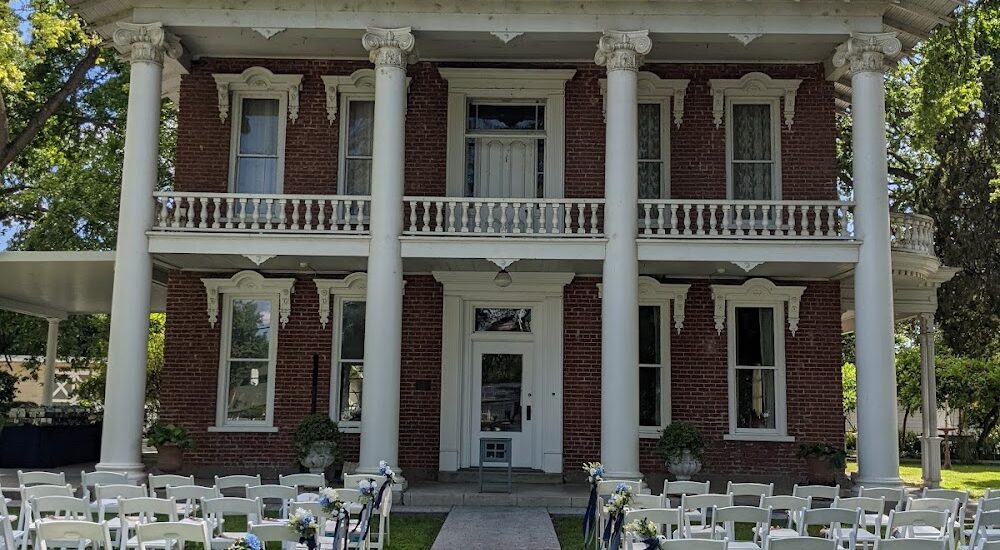Welcome to the Gibson House in Woodland, California, a fascinating historical landmark that tells the story of both a pioneering family and the agricultural evolution of Yolo County. This grand residence, now serving as a museum, is a blend of architectural styles including Georgian Revival, Italianate, and Neoclassical, reflecting its growth over several decades.
The story of the Gibson House begins with William Byas Gibson, a Virginia native who ventured to California in 1850. Like many during that era, he arrived with dreams of striking gold but instead found his fortune in the fertile lands of Yolo County. By 1851, William had settled on a 160-acre plot, which he later expanded to 320 acres, laying the foundation for what would become a prosperous agricultural estate.
In 1857, William married Mary Isabel Cook, and together they built their lives on this growing estate. The modest 16-by-20-foot structure they initially called home would eventually transform into a sprawling mansion, accommodating their growing family and burgeoning agricultural business. By the 1870s and into the 1900s, William expanded the house, adding parlors and bedrooms, and surrounded it with outbuildings like a workshop and cook’s house, making the estate largely self-sustaining.
William and Mary raised three sons here, each contributing to the community in unique ways. Robert Gibson, the eldest, managed the estate with an education in business. Thomas Ballard Gibson, the second son, became a prominent local figure, opening a hardware store and promoting local enterprises like the Woodland Creamery Company. The youngest, Joseph, passed away at a young age, leaving less of a mark on the family legacy.
After William and Mary passed, the estate continued to thrive under Robert’s stewardship, expanding to 2,400 acres by 1891. However, following the death of Elnora Gibson in 1963, the house fell into disrepair until it was acquired by the county in 1975. This marked a new chapter as the Gibson House was transformed into a museum and cultural center, preserving its rich history for future generations.
Today, the Gibson House stands not just as a monument to one family’s legacy but as a testament to the agricultural development of the region. Its halls echo with stories of the past, inviting visitors to step back in time and explore the heritage that shaped Woodland, California.






